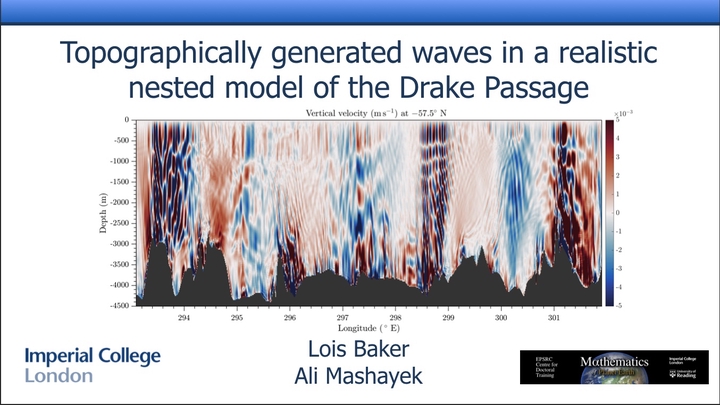Topographically generated waves in a realistic nested model of the Drake Passage

Abstract
Recent wave-resolving simulations of the Drake Passage region demonstrate a very energetic lee wave field generated by the interaction of fast currents with rough topography. Understanding how and where these waves break is important for parametrising drag and diapycnal mixing in the region. I’ll discuss these simulations and a corresponding linear theory to explain how topographically generated internal waves can interact with the vertically varying conditions of the water column and the surface.
Date
May 19, 2021 6:00 PM
Event
SOCCOM Modeling Telecon